South Africa‘s extensive coastline offers a diverse array of diving experiences, from the kelp forests of Cape Town to the vibrant reefs of Sodwana Bay. Whether you’re seeking encounters with majestic sharks, exploring unique underwater ecosystems, or witnessing the spectacular annual sardine run, South Africa has something for every diving enthusiast.
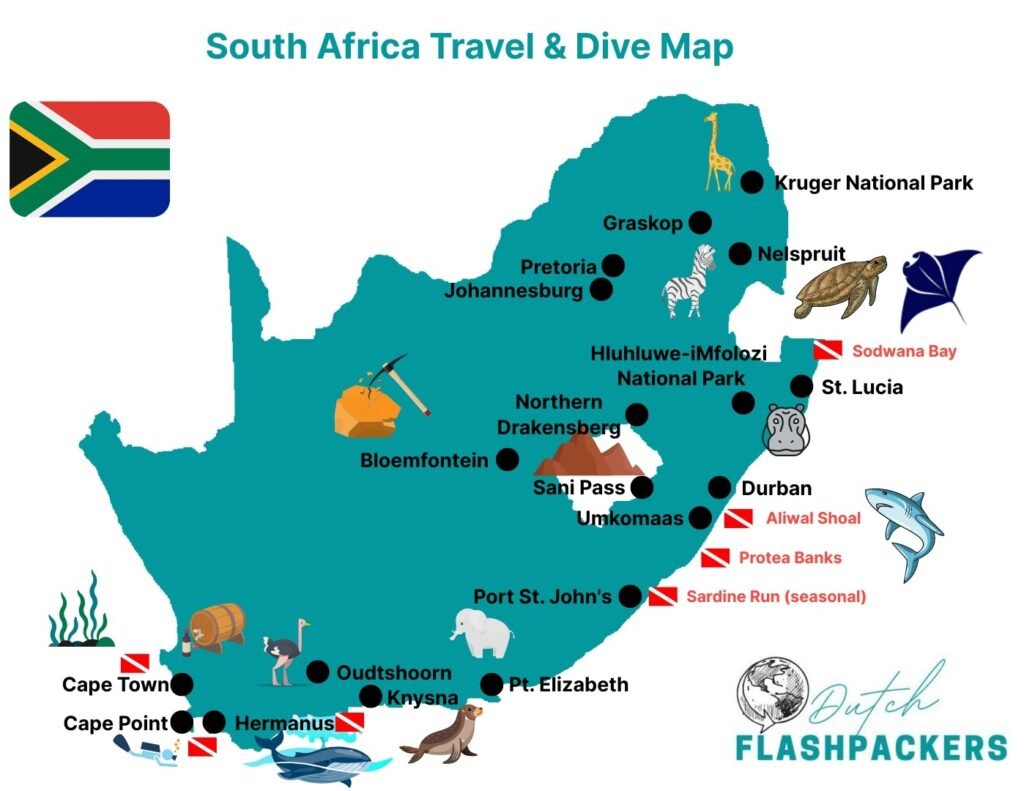
The Best Season to Dive
- Kelp Dives in Cape Town: Best from October to May, when visibility is better and conditions are calmer. Winter months (June–September) bring rougher seas but also excellent visibility after storms.
- Garden Route: Diving is possible year-round, but the best conditions are typically from November to April, when seas are calmer and visibility is higher.
- Aliwal Shoal: Prime diving occurs from April to November, with peak shark activity from July to November (raggie season). The bull shark and tiger shark season at Aliwal Shoal typically runs from November to March. During these months, the warm waters and abundant food attract these larger shark species to the area.
- Protea Banks: Best between April and September for shark diving, while hammerhead shark season peaks from November to February.
- Sodwana Bay: A year-round destination, but best conditions are from April to September, when visibility is highest. Summer (November–March) brings warmer waters and turtle nesting.
- Sardine Run: Only takes place from May to July, making this a seasonal, once-in-a-lifetime experience.
Diving South Africa’s Top Sites
South Africa’s diverse marine environments promise unforgettable experiences for divers of all levels. Whether you’re navigating the mystical kelp forests of Cape Town, encountering sharks in Aliwal Shoal and Protea Banks, exploring the rich reefs of Sodwana Bay, or immersing yourself in the chaos of the sardine run, the country’s underwater adventures are as varied as they are exhilarating.
Kelp Dives around Cape Town and the South Coast
Cape Town‘s underwater world is dominated by the enchanting kelp forests of the Atlantic, False Bay and Gordon’s Bay. Diving here immerses you in a serene environment where sunlight filters through the swaying kelp, creating a mesmerizing dance of light and shadow. These nutrient-rich waters support a plethora of marine life, including playful Cape fur seals, variety of colorful nudibranchs, and if you are lucky you might encounter sharks like the pajama shark. The kelp forests are accessible year-round, with water temperatures ranging from 10°C to 15°C, making a thick wetsuit or drysuit advisable.
Kelp dives offer a truly unique experience, immersing you in an underwater forest where you can weave between towering kelp stalks. When the sunlight filters through the swaying leaves, it creates a mesmerizing, almost magical atmosphere. Many dive sites around Cape Town are easily accessible from the shore, making them ideal for beginners. During our dives, we were lucky enough to encounter playful Cape fur seals and an abundance of crayfish, adding to the adventure.
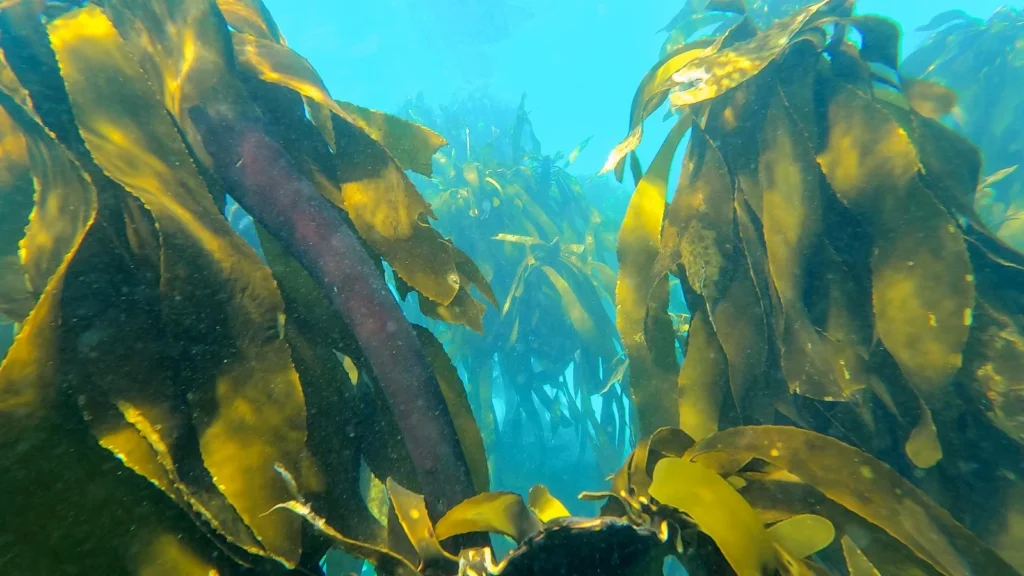
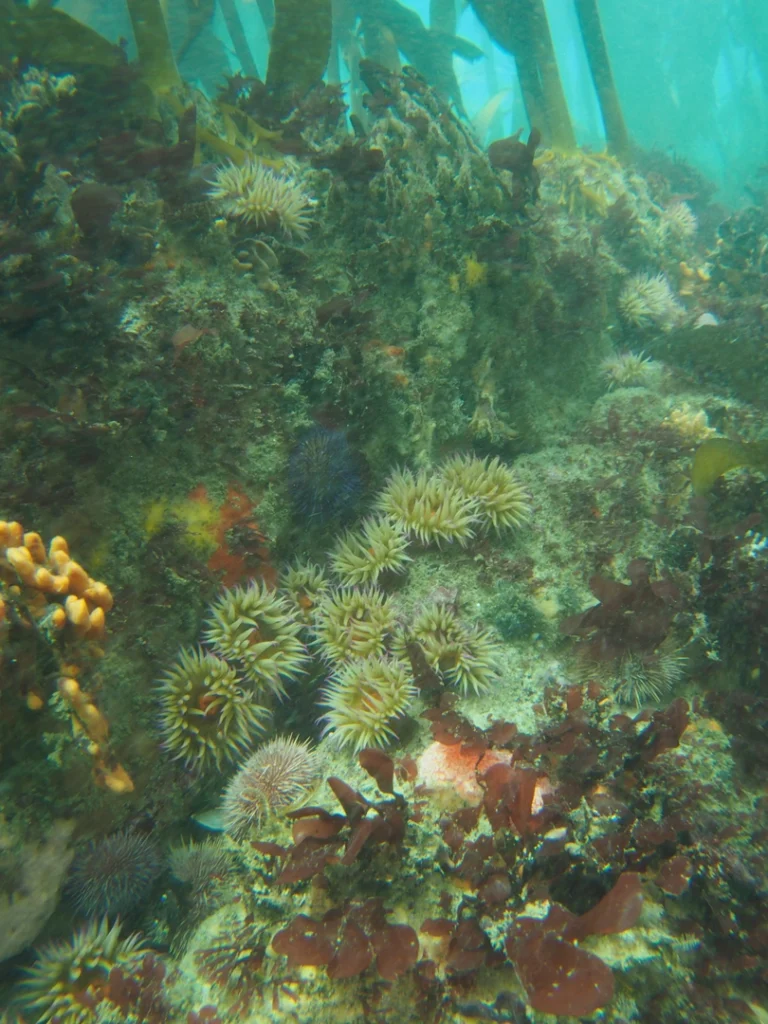
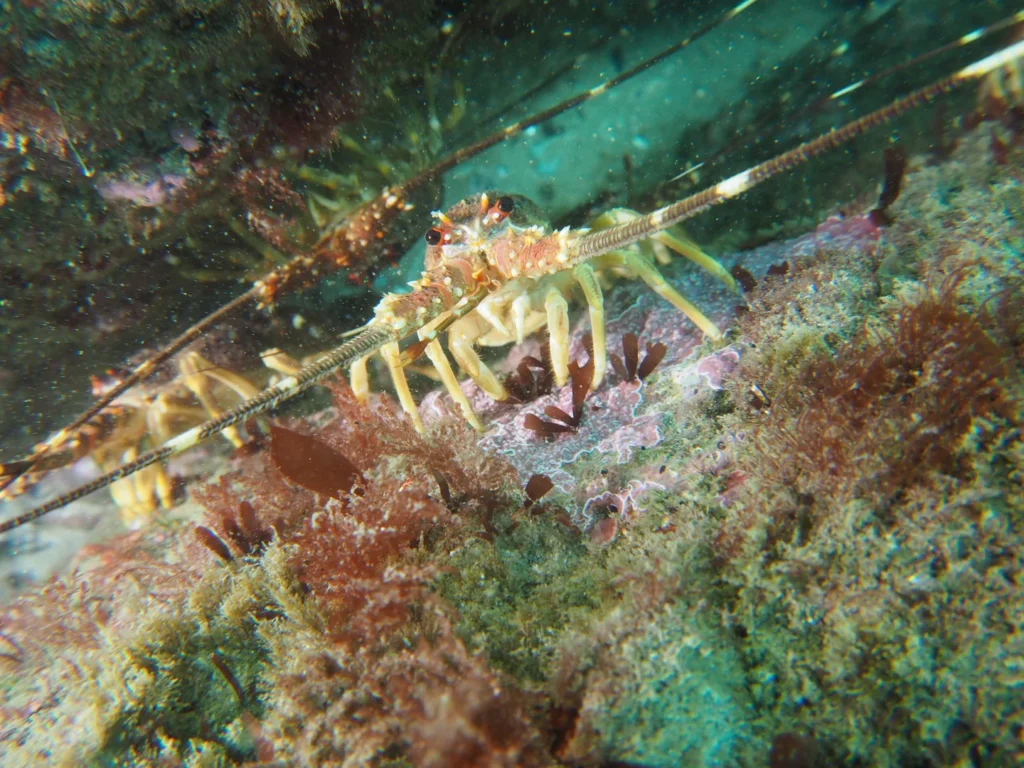
Diving Along the Garden Route
Though often overshadowed by South Africa’s tropical east coast, the Garden Route offers rewarding dives with temperate reefs, kelp forests, and playful seal encounters. Water temperatures range from 14°C to 20°C, depending on the season, so a 5–7mm wetsuit (or semi-dry) is recommended.
- Mossel Bay: Sheltered reefs with soft corals, colorful fish, and curious Cape fur seals.
- Plettenberg Bay: The Shallow Blinders reef and Robberg Peninsula offer relaxed dives and close-up seal interactions.
- Tsitsikamma Marine Protected Area: Pristine reefs and kelp forests mark the meeting point of the Atlantic and Indian Oceans.
Accessible and diverse, the Garden Route is perfect for travelers seeking scenic, off-the-beaten-path dives along South Africa’s southern coast.
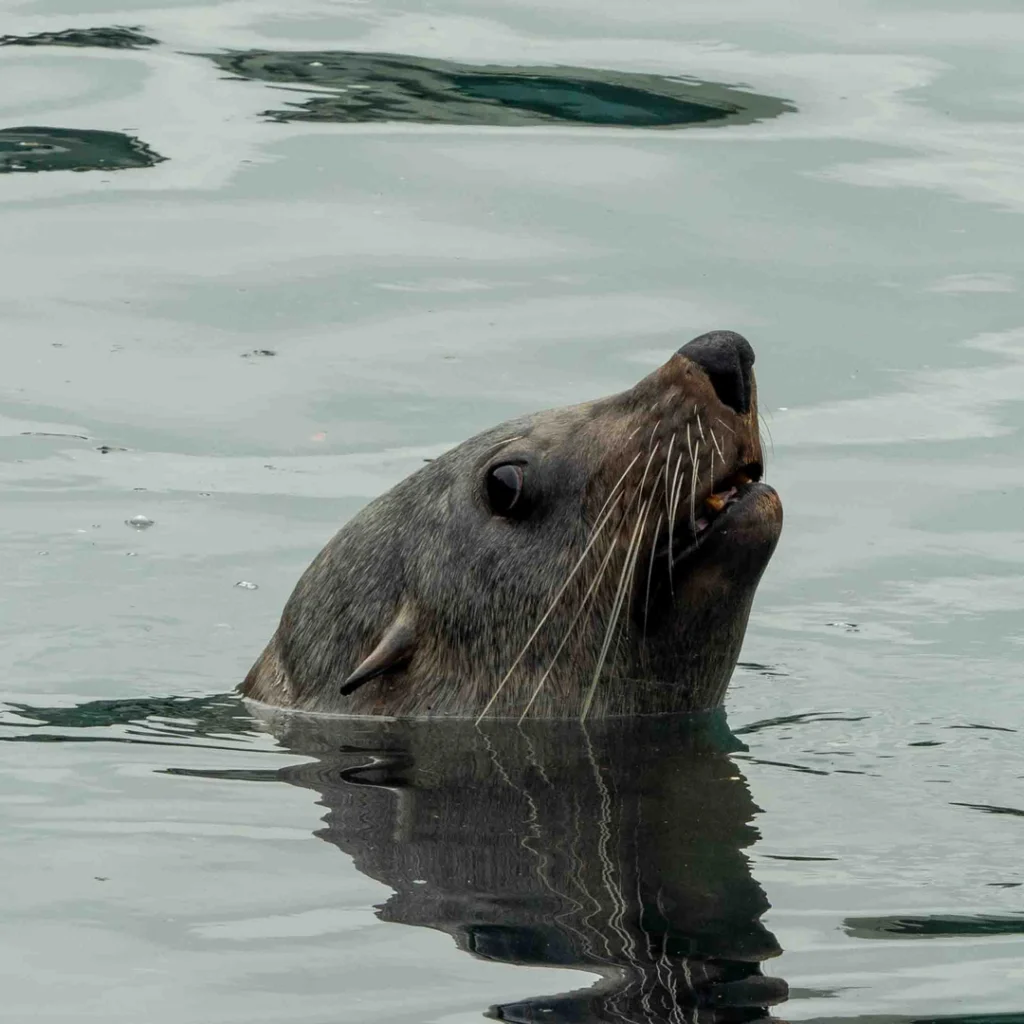
Aliwal Shoal
Located just south of Durban, Aliwal Shoal is renowned for its rich marine biodiversity and thrilling shark encounters. This ancient sandstone reef, part of a Marine Protected Area, offers dive sites suitable for various skill levels, featuring pinnacles, caves, and wrecks teeming with life. One of the biggest draws here is the baited shark dives, where operators chum the water to attract sharks, creating an exhilarating experience for divers. The most frequently encountered species is the oceanic blacktip shark, known for its sleek body and curious nature. Depending on the season, bull sharks and tiger sharks also make an appearance, adding to the excitement. From July to November, the shoal becomes a gathering spot for ragged-tooth sharks. The warm Agulhas current ensures pleasant water temperatures, typically ranging between 20°C and 25°C.
Top dive sites include:
- Cathedral – One of the most iconic sites, Cathedral is a large, open cave at about 27 meters, framed by stunning rock formations. It’s a hotspot for ragged-tooth sharks (raggies) during their breeding season (July–November), making for an unforgettable dive.
- Raggie Cave – As the name suggests, this site is another prime spot for seeing raggie sharks during the winter months. The cave sits at around 18 meters, making it a relatively accessible site for most divers.
- Shark Alley – Located between two rocky ridges, Shark Alley is a famous drift dive where divers often encounter oceanic blacktips, bull sharks, and tiger sharks (seasonal).
- Inside Edge & Outside Edge – The Inside Edge is a shallower reef section (12–18m) with coral growth and plenty of reef fish, while the Outside Edge (20–30m) is a deep drop-off where large pelagics, game fish, and sharks are frequently seen.
- The Produce Wreck – A Norwegian cargo ship that sank in 1974, now sitting at 32 meters. The wreck is home to potato bass, moray eels, and schools of barracuda. Due to its depth, this is a dive for advanced divers.
- MV Nebo Wreck – Another deep wreck (27m), the Nebo sank in 1884 carrying a load of steel. Over the years, it has become an artificial reef, attracting rays, sharks, and large schools of fish.
When it comes to choosing a dive operator, Blue Ocean Resort stands out as the top choice nowadays, known for its experienced guides, well-maintained equipment, and excellent accommodation. We have experience with the instructors of Aliwal Dive Center and Ocean Warriors.
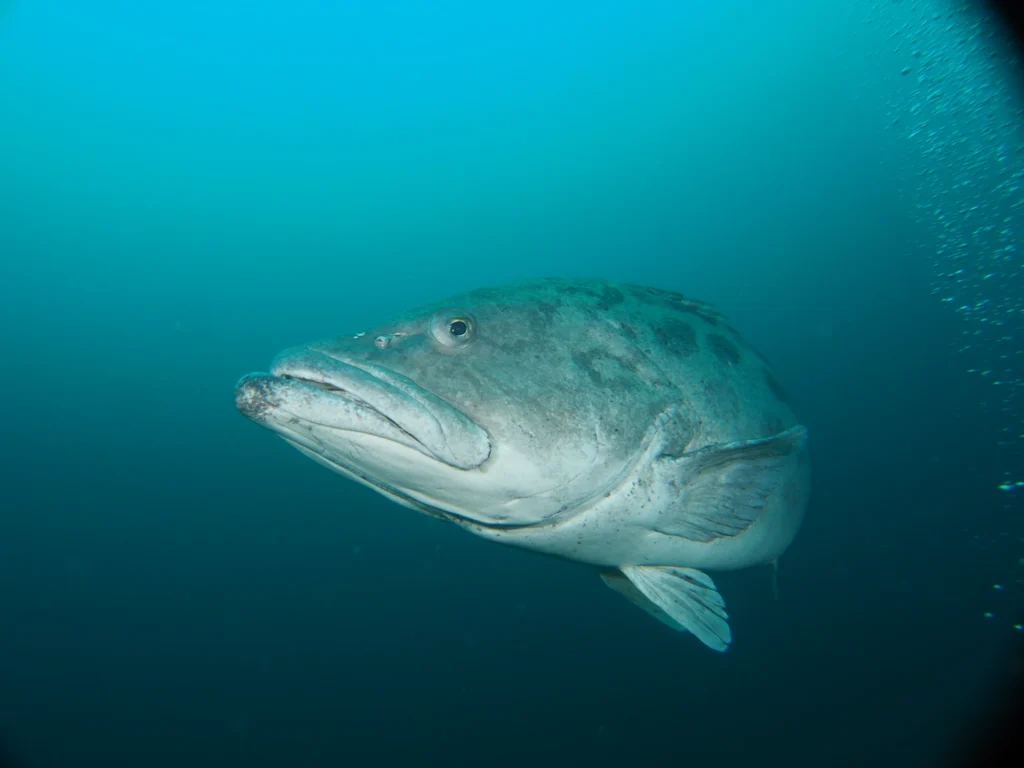
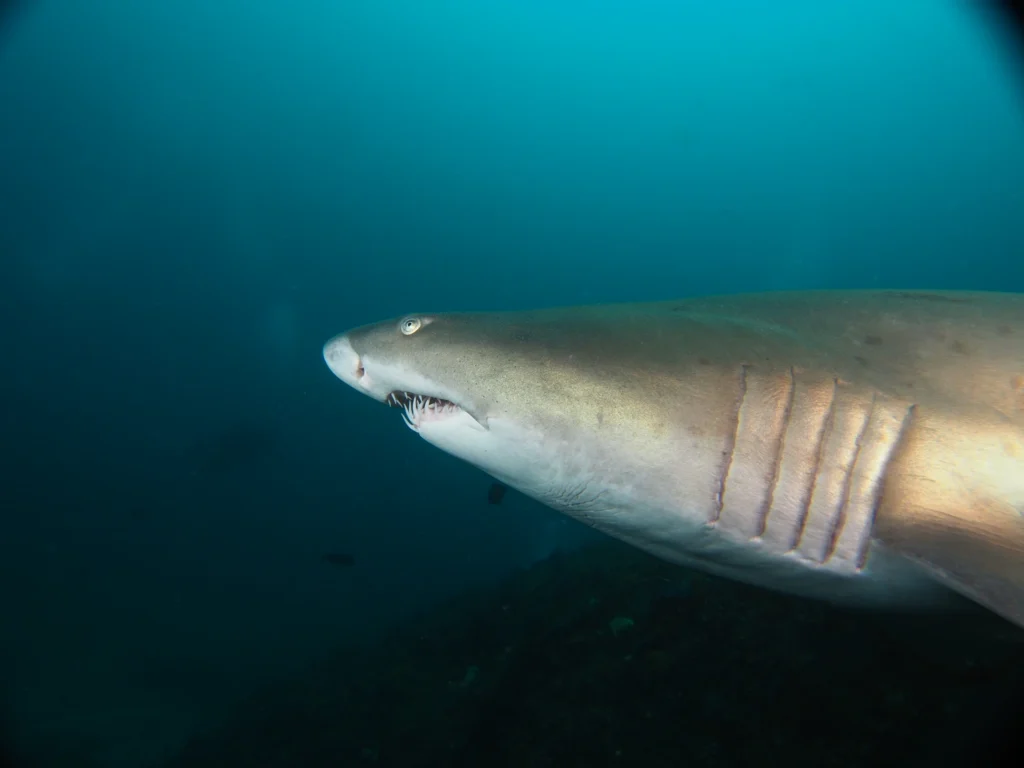
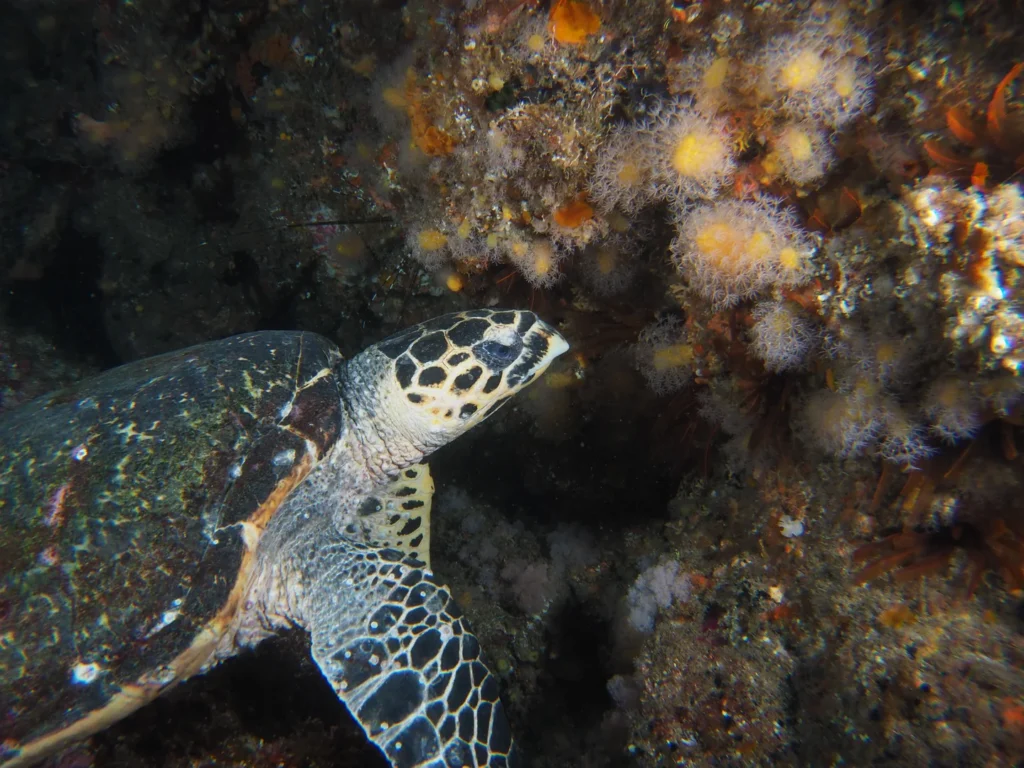
Protea Banks
For those seeking adrenaline-pumping dives, Protea Banks is a must-visit destination. Situated about 7.5 kilometers offshore from Shelly Beach, this fossilized sandbank offers depths ranging from 27 to 40 meters. Protea Banks is famed for its shark sightings, including bull sharks, tiger sharks, and large schools of hammerheads. The reef’s topography features caves, overhangs, and pinnacles, creating an ideal habitat for game fish and other pelagic species. Due to strong currents and depth, dives here are recommended for advanced divers only. The warm Agulhas current ensures similar water temperatures as Aliwal Shoal, typically ranging between 20°C and 25°C.
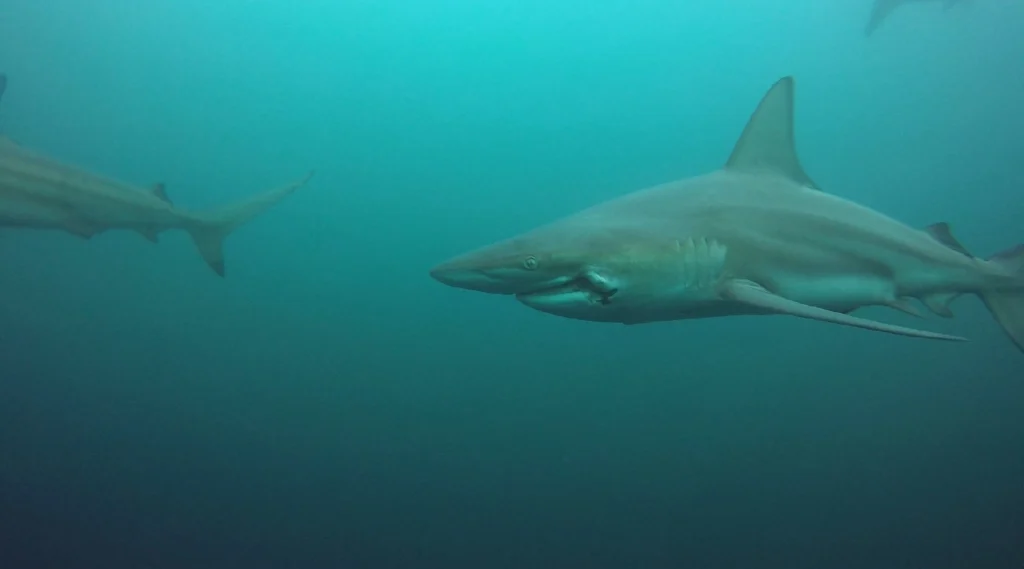
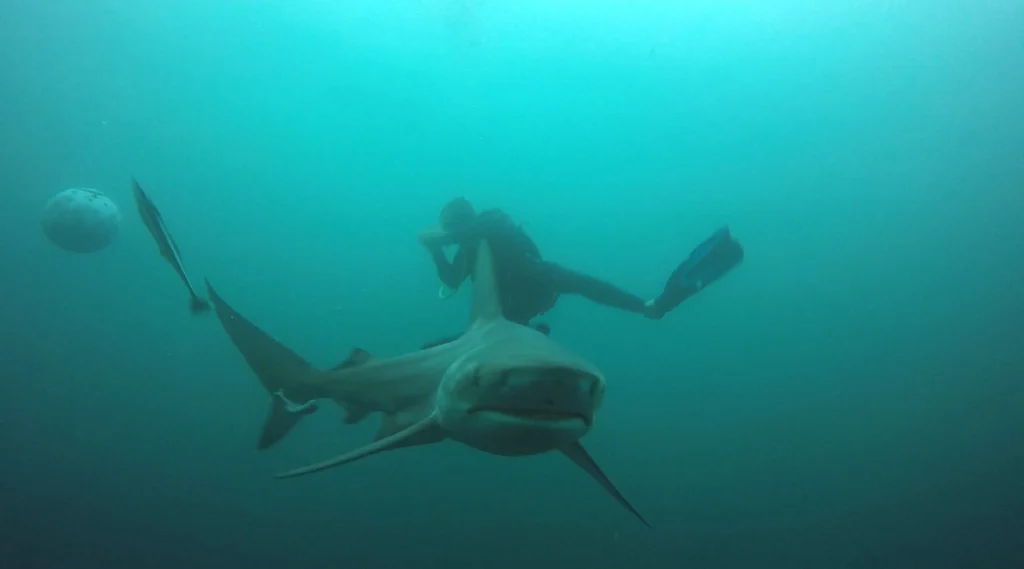
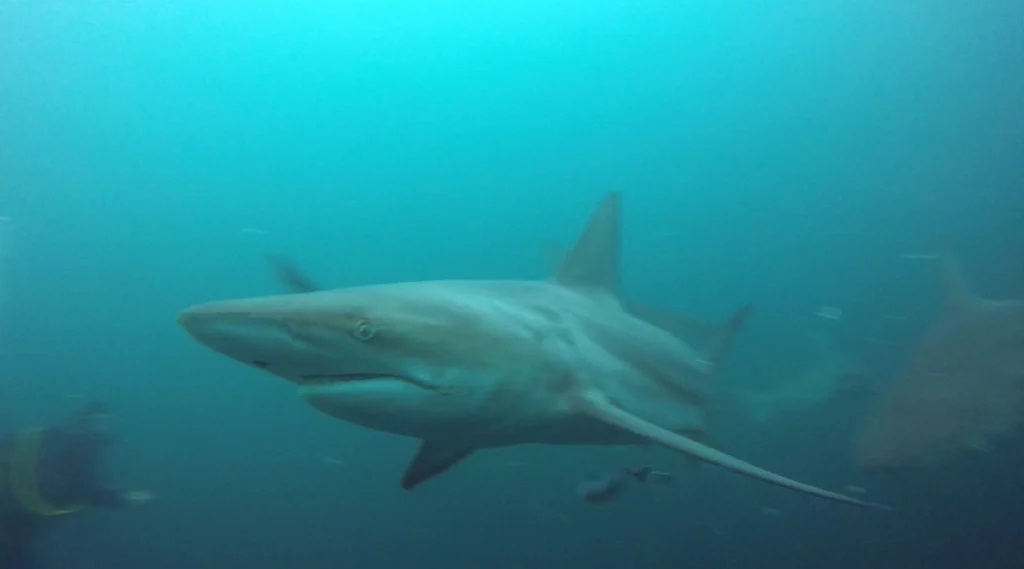
Sodwana Bay
Nestled within the iSimangaliso Wetland Park, a UNESCO World Heritage Site, Sodwana Bay is one of South Africa’s most stunning dive destinations, home to the world’s southernmost coral reefs. These reefs, including famous sites like Two Mile Reef, Five Mile Reef, and Nine Mile Reef, are known for their rich biodiversity and crystal-clear waters. Visibility often exceeds 20 meters, with water temperatures ranging from 24°C to 28°C, making it a comfortable dive spot year-round.
The reefs are adorned with vibrant hard and soft corals, creating an idyllic environment for an array of marine life, including turtles, dolphins, and a myriad of tropical fish species. Some of the larger marine creatures you may encounter include manta rays, whale sharks, and reef sharks. If you’re lucky, you might even spot humpback whales during their migration season (June to November).
Sodwana Bay is also an essential turtle nesting site, with leatherback and loggerhead turtles nesting along the beaches from November to April. The hatchlings begin to emerge in the early summer months, offering an additional magical experience for visitors to the area.
Top Dive Areas of Sodwana Bay:
- Two Mile Reef – A popular site for beginners and intermediate divers, Two Mile Reef is located about 3.2 kilometers offshore and features an array of coral gardens and abundant marine life. Expect to see colorful reef fish, moray eels, octopus, and frequent sightings of sea turtles.
- Five Mile Reef – A deeper site, located approximately 8 kilometers from shore, Five Mile Reef offers stunning coral formations, large schools of barracuda, and the chance to spot manta rays. This reef is great for divers with more experience and offers some exciting drift dives.
- Seven Mile Reef – Between Five Mile Reef and Nine Mile Reef, this site offers a mix of shallow and deeper waters with vibrant coral formations and abundant marine life. It’s less frequented but still provides excellent opportunities to see turtles, ray species, and large schools of fish.
- Nine Mile Reef – Known for its impressive coral formations and deeper waters (up to 30 meters), Nine Mile Reef attracts divers seeking larger marine life, including whale sharks and pelagic species. Expect to encounter dolphins and sharks, as well as large schools of fish.
There are quite a few dive centers that are launching from the same beach. We decided to go for Coral Divers, because they were the only dive center directly in the national park. We were not that satisfied ourselves, they are teaching a lot of divemasters and instructors, and you’ll likely have another guide every dive. It felt more of an instructor factory with not a lot of personality. If we’d go back we would try Sodwana Bay Lodge, we’ve heard good reviews but haven’t tried them ourselves (yet).
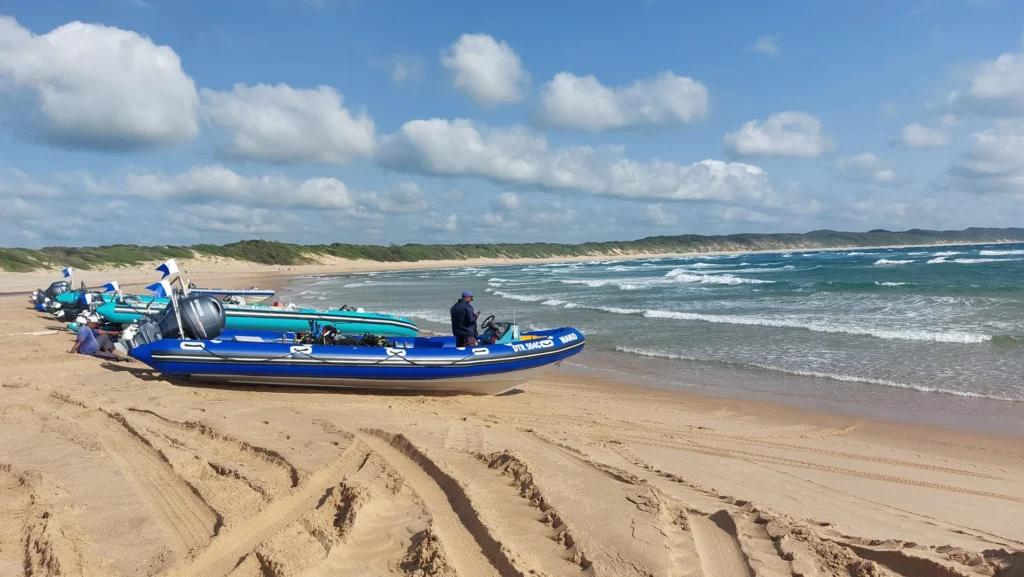
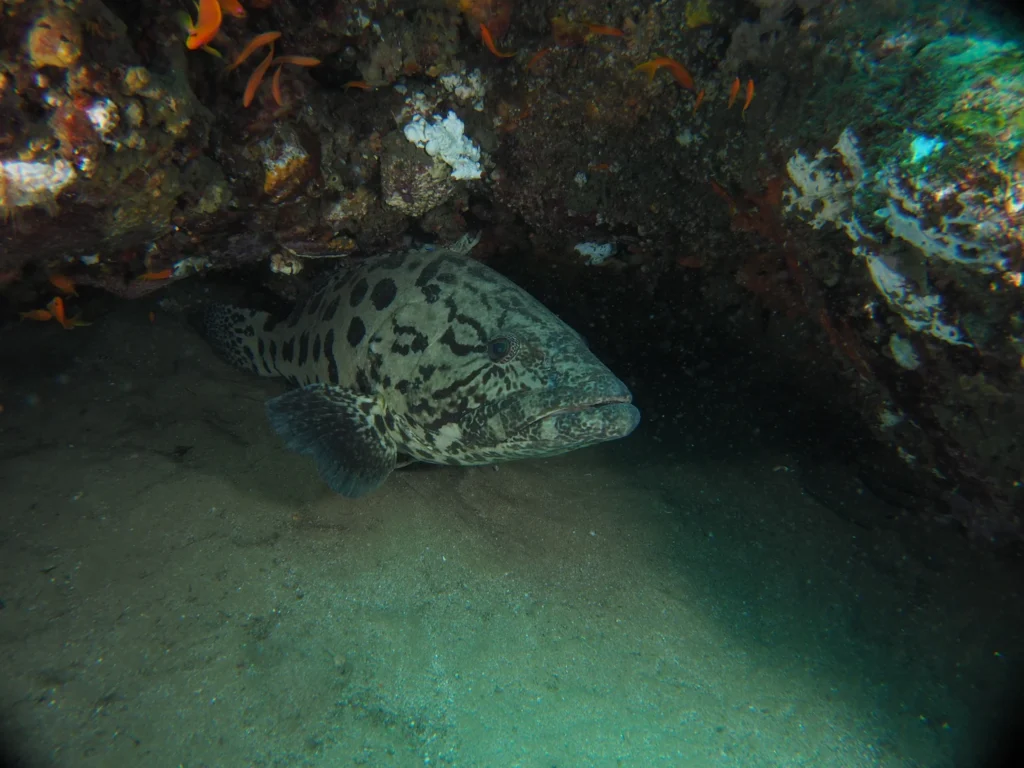
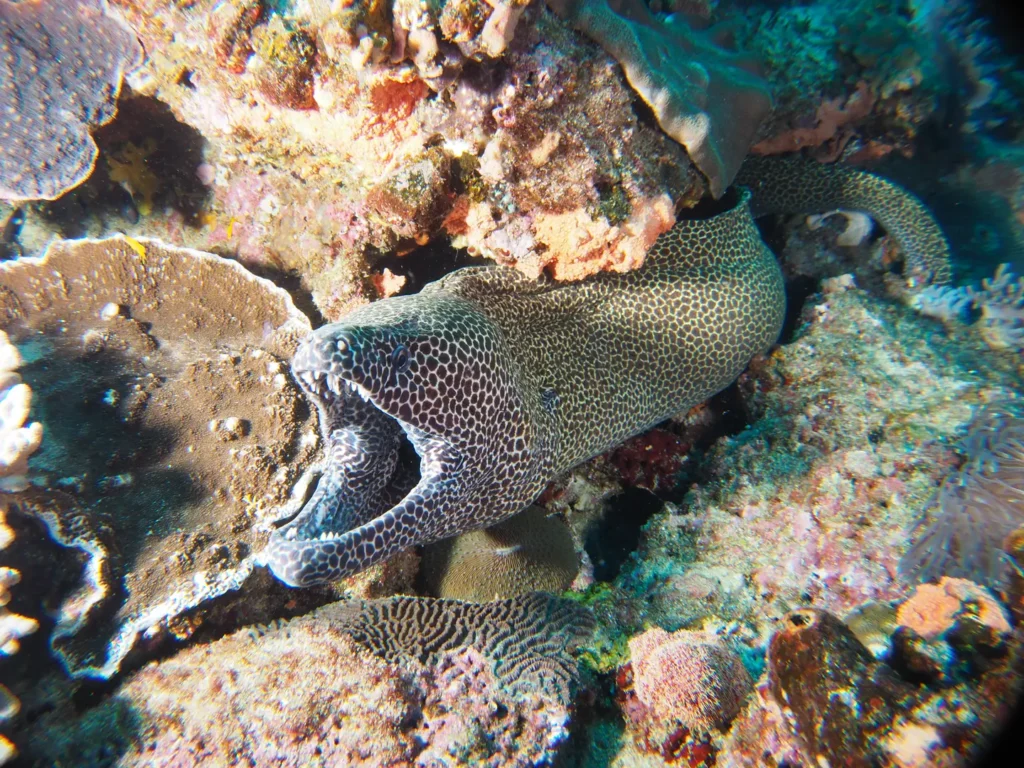
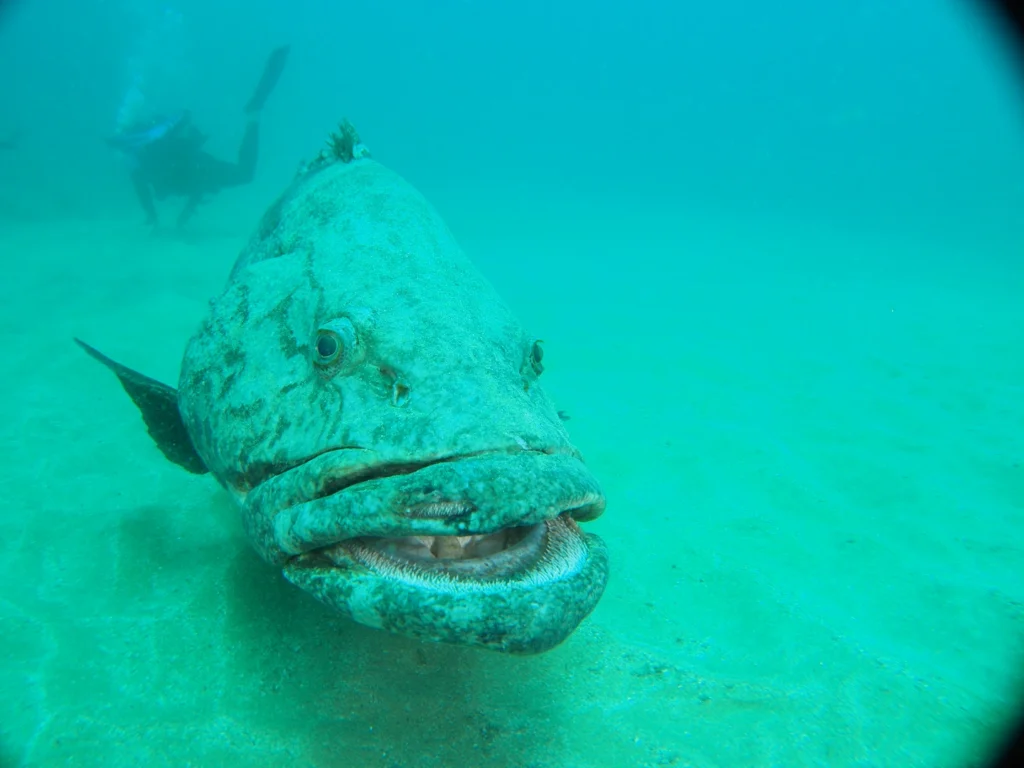
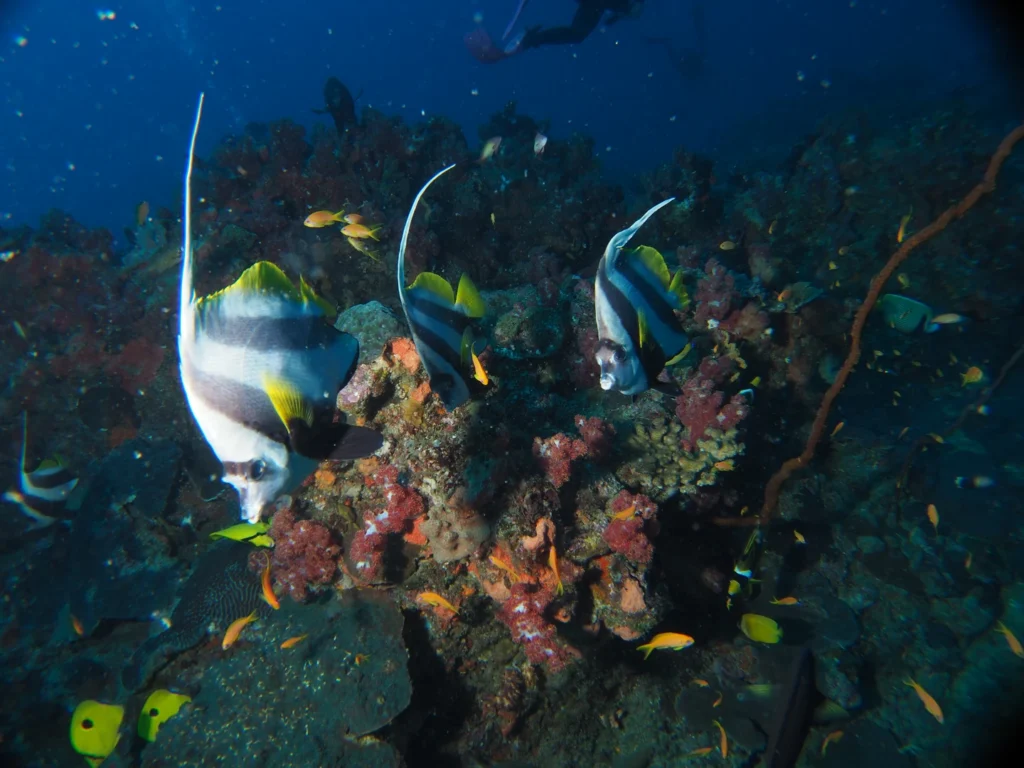
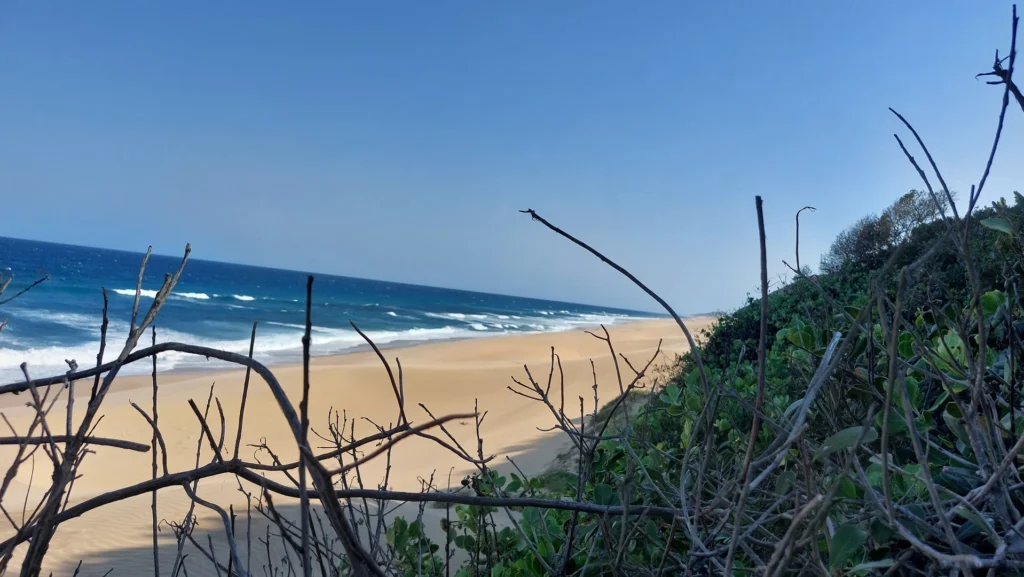
The Annual Sardine Run
One of the most spectacular marine events in the world, also known as ‘The Greatest Shoal on Earth’, the Sardine Run occurs each year from May to July along South Africa’s Wild Coast. This natural phenomenon sees billions of sardines migrating along the coastline, attracting a host of predators including dolphins, sharks, whales, and seabirds. The action is thrilling, as predators chase the sardines into bait balls, offering a front-row seat to one of nature’s most intense feeding frenzies. Most operators typically depart from Port St. Johns or East London, although some may start from smaller towns like Coffee Bay or Mbotyi.
While the Sardine Run is an exhilarating event, it’s important to note that snorkeling generally takes precedence over diving. Most of the time, you’ll be spending your day on a boat, looking for the right spot to jump in and witness the action. The visibility is often excellent, but the sardine run can also be unpredictable, with boats sometimes searching for hours to find the best feeding activity. It’s a thrilling experience, but not always centered around diving in the traditional sense.
Most dive operators offer Sardine Run packages that include transportation and boat trips to track the action. These packages are convenient, as they bundle together all the logistics you’ll need for the Sardine Run. However, you can save a significant amount of money if you choose to rent a car and make your own way to the starting point. Renting a car not only gives you more flexibility but also allows you to explore the beautiful surroundings at your own pace. Additionally, if the sea is too rough for boat trips, you can use the time to visit nearby attractions and enjoy the stunning landscapes of the Wild Coast, making the most of your trip even when conditions aren’t perfect for diving or snorkeling.
Planning Your Dive Adventure in South Africa
From the kelp forests of Cape Town to the coral reefs of Sodwana Bay, South Africa’s underwater world is as rich and varied as its landscapes. Each region offers something unique, from playful seals along the Garden Route to thrilling shark encounters off the KwaZulu-Natal coast and the breathtaking spectacle of the Sardine Run. Whether you’re exploring colorful reefs or drifting through kelp forests, every dive reveals a new side of the country’s natural beauty. To make the most of your journey, consider pairing your diving adventure with a safari in one of South Africa’s world-renowned reserves. For inspiration on how to combine both, explore our South Africa itinerary guide.
Help us by supporting our blog
We want to give you honest reviews and keep this blog free. Therefore we added some affiliate links that might give us a commission at no additional cost to you. Support our blog by booking through our partners.





This is an incredibly comprehensive dive guide! My sister is an avid diver and is always looking for new destinations beyond her usual spots in Mexico and Egypt, so I immediately sent this post to her. I know she’ll be fascinated by your description of the kelp forest dives around Cape Town—it sounds so unique. The chance to dive with playful Cape fur seals seems like an unforgettable experience. Thanks for sharing such great, detailed info!
Thanks! Glad you like it :). Even if it only helps 1 person to plan their trip, it is worth it!
I have dreamed for years of learning how to dive…I am an avid snorkeler…so I didn’t know that South Africa was such a great dive destination. How is the snorkeling?
Hi Jacki!
South Africa has so much to offer below and above the water, so I’d definitely recommend. And of course, I can also recommend to learn to dive ;).
As for snorkeling, that is totally possible in the south. The kelp forests are pretty shallow and it is pretty magical to swim through an ‘underwater forest’. Keep in mind that the water is rather chilly though, so a wetsuit is recommended. As for the east coast, the reefs are generally a bit deeper. It isn’t as accessible to snorkelers unfortunately, but there are dive schools that plan shark snorkels, where you can snorkel with (mostly) oceanic blacktips in or out of a cage.
Hope that helps!
Melissa
I’ve never thought of South Africa as a diving spot – you’ve definitely changed my mind and hope to dive there one day.